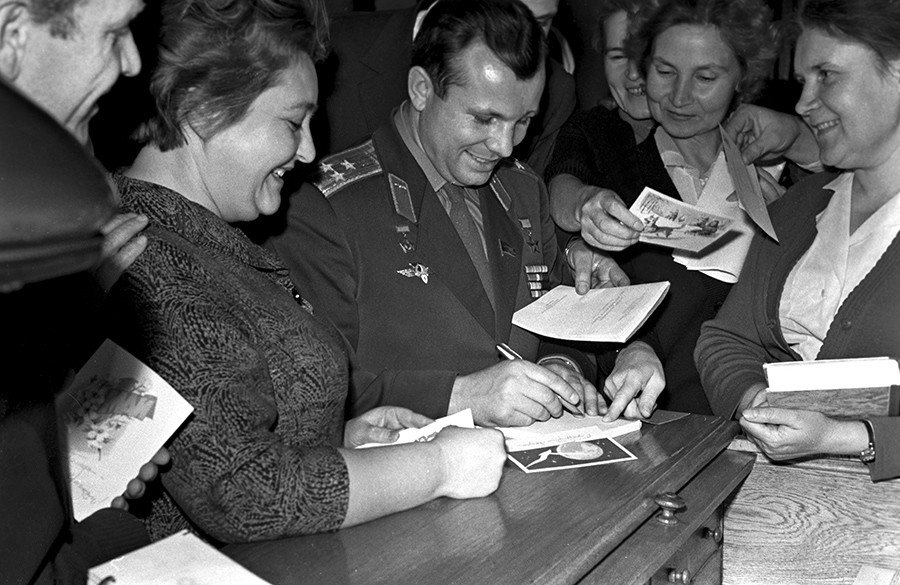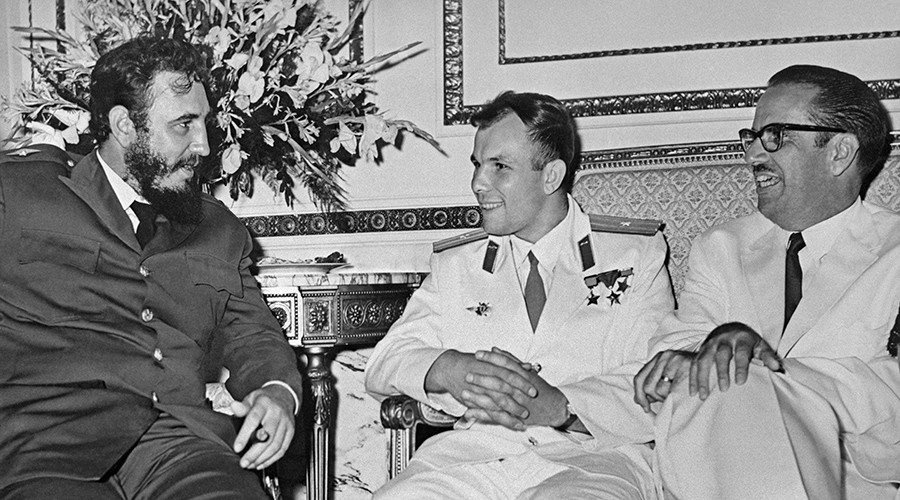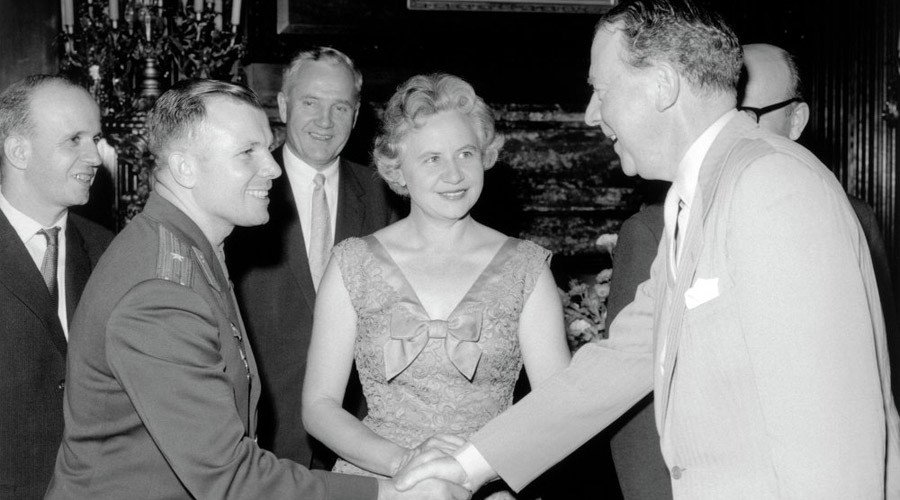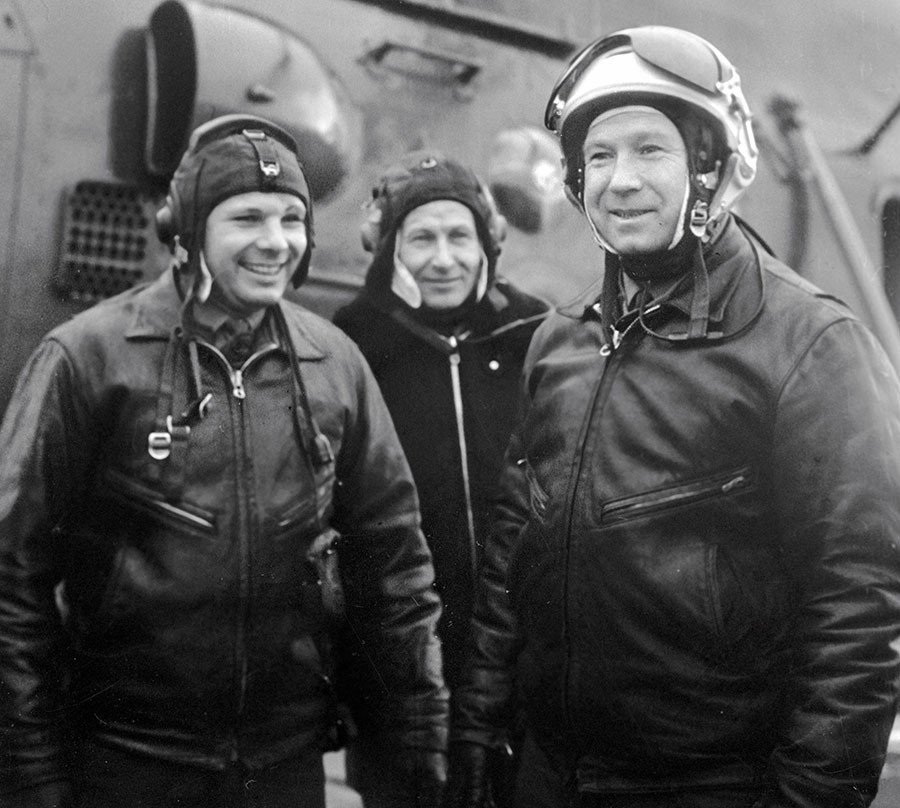The real Gagarin: Busting three major myths about the Soviet space pioneer

Fifty-five years after the first spaceflight and 48 after Yuri Gagarin died in a plane crash at the age of just 34, a cottage industry has sprung up around the first cosmonaut. Here, RT tries to detangle the man from his ever-growing mythology.
MYTH: Gagarin was not chosen for his mission on merit

As the team of would-be space explorers was whittled down to 20, and then 6, ahead of the Vostok 1 flight, two men stood out, Gagarin and Gherman Titov, who eventually became the second Soviet cosmonaut. It has become trendy to say that Gagarin was picked over the better-qualified, more intellectual Titov simply because of his photogenic smile and the virtue of having a name that didn’t evoke the country the USSR had been at war with just 15 years before.

This explanation does not properly take into consideration the qualities and abilities that would be required in a perfect, first cosmonaut, however. During his 108 minutes in space, Gagarin did not need to carry out any complicated experiments, or even pilot his capsule, and those that selected him were acutely aware that the first man in space would be a historic figure for all time – and were proven correct.

Claiming that Gagarin was just a Communist figurehead symbolically chosen from peasant stock also sells the man short. Accounts from his family members, supervisors, and doctors, as well as those he encountered for just a few hours, all indicate that Gagarin was a man blessed with genuine emotional intelligence and a host of other positive qualities. He was even-tempered, good-natured, humorous, tactful, inquisitive, and patient, as well as a fast learner and efficient networker.

Some of his abilities were almost preternatural. Regardless of the magnitude of the occasion, Gagarin could fall asleep and wake at will. He also had nerves of steel, never losing control even when acutely aware of danger. Physically, his stature of 1.57 meters (5ft, 2in) may now seem short, but it was suitable for his cramped craft, and he was known for never falling ill, and being extremely physically fit, well-coordinated, and resilient as he passed the boundary-breaking tests imposed upon the trainees at Star City prior to liftoff.

In almost every way, Gagarin still serves as the archetype for a hero you would want to send on a death-defying mission of planetary significance.
MYTH: Glamorous post-mission life corroded Gagarin

Portraying Gagarin’s post-flight life as that of the fallen hero – the spaceman whose lifetime mission has been completed, left to hang around retelling old stories to dignitaries at endless cocktail-soaked receptions – is tempting, and not entirely without foundation.

Being a Soviet hero had as many obligations as perks, however, and for the half-decade following his historic flight, Yuri Gagarin’s timetable was not his to control, as he was whisked around the world to meet with a bewildering range of adulating strangers, from Queen Elizabeth and Fidel Castro to foundry workers and obsessed Japanese fans.

While foreign trips produced the best stories – like the endlessly-repeated but hard-to-trace rumor of a night of passion with actress Brigitte Bardot – it was the routine Soviet functions, in which imbibing hard alcohol was mandatory and turning it down considered a sign of rudeness, that exacted the heaviest toll on Gagarin, who would often be asked to lead the toasts.

Photos from the mid-1960s show a noticeably stouter, more tired-looking Gagarin than that of a couple of years earlier, but while the cosmonaut indulged willingly both in intimate circles and in public, there was little to suggest that he was more than a social drinker, and his family say that even then he often resorted to sneaking in a false bottom shot glass to reduce his intake.

Yuri Gagarin’s family freely admitted that he was away most of the time, and his somewhat private wife, Valentina, would rarely get the opportunity to see him alone. Nonetheless, Gagarin was a good father to his two small daughters and displayed no obvious discontentment with his marriage.

In any case, by 1966, a now better-educated and more urbane Gagarin regained a sense of purpose and returned to his direct duties, training with a Soyuz crew that would later be disbanded after one of its members died.
In his final year, Gagarin was a committed test pilot, flying almost daily from Chkalovsky Air Base outside of Moscow.
MYTH: Gagarin’s death was a sinister conspiracy

The death of the world’s first space explorer on March 27, 1968 in a routine but unexplained air crash was bound to create wild speculation and conspiracy theories, especially considering that news of the tragedy was hushed up for two days, and Gagarin’s life should have been safeguarded more than almost any other in the Soviet Union.
So, let’s get the most ludicrous conjectures out of the way first: there is no factual evidence at all that Leonid Brezhnev ordered a hit on the popular but increasingly out-of-control cosmonaut, whom he did not favor as his predecessor, Nikita Khruschev, had. Neither has anyone found that Gagarin was drunk and trying to shoot wild deer from his cockpit when he crashed, nor was Gagarin killed by aliens that had first probed him during his virgin space flight.
Yet the exact sequence of events that led to his demise is genuinely open to question, particularly since the Soviet Union classified the findings of the high-powered investigation into the tragedy for decades, leaving a series of disparate interviews with his family members, all having their own agendas, as the main window of insight.

Alexey Leonov, Gagarin’s close friend and one of the investigators, has claimed that two booms were heard during the crash. The first was from a Su-15 flying less than 20 meters (22 yards) from Gagarin’s MiG-15, which broke the sound barrier, sending the cosmonaut into a fatal tailspin. Leonov said that the commission had hushed up the true version to protect the surviving aviator, who was a distinguished test pilot himself.
READ MORE: https://www.rt.com/news/gagarin-death-truth-revealed-674/
Arseny Mironov, another member of the commission, claimed it was a lack of proper warning about poor impending bad weather that had doomed Gagarin’s plane. The former-cosmonaut’s instructor and co-pilot, Vladimir Seregin, turned out to be unable to guide him through a fairly standard emergency, which may have been partly due to the fact that Gagarin had only recently begun to recover his skills. According to Mironov, placing blame on incompetent officials on the ground would have threatened the careers of a whole bloc of officials, who could have lost not only their jobs, but possibly their freedom.

The findings of the official investigation, which were finally unsealed in 2011, merely say that Gagarin attempted to swerve in order to avoid a weather balloon that had been launched from a nearby meteorological research institute, and consequently lost control of the plane. The two pilots attempted to regain control of the jet rather than eject, but ran out of air as they plowed into a field.












